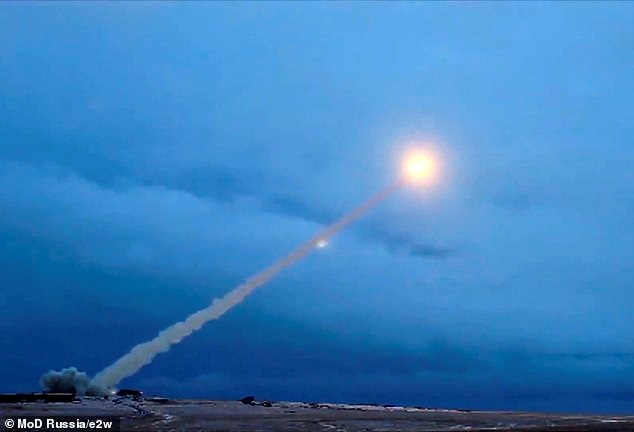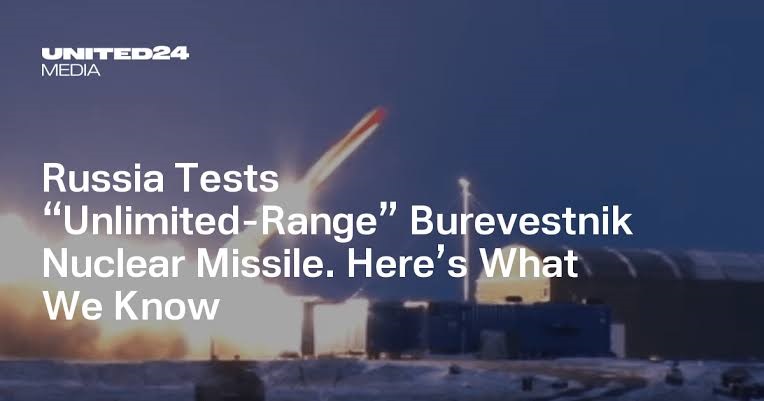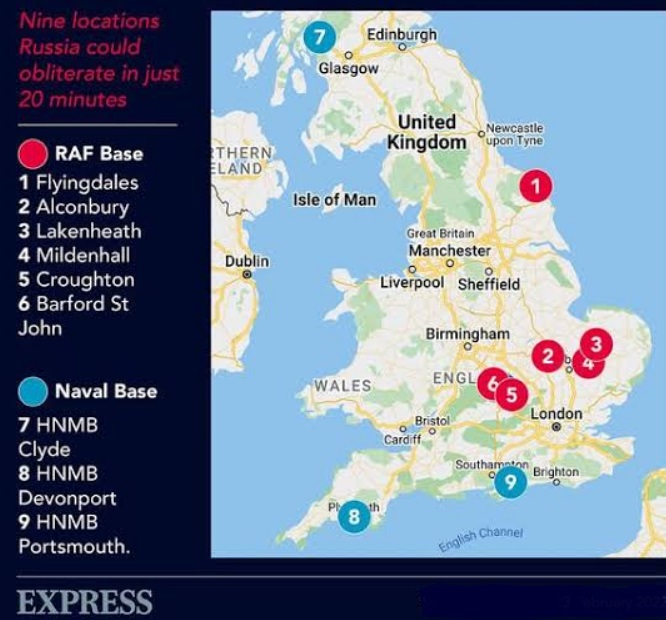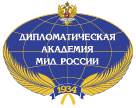 Putin revealed a 'successful' secret flight on October 21 of the Burevestnik doomsday winged rocket which has an 'unlimited range'.
Putin revealed a 'successful' secret flight on October 21 of the Burevestnik doomsday winged rocket which has an 'unlimited range'.
The British publications are filled with fear and uncertainty about the effectiveness of their own defense against Russian weapons.
Britain had long tested Russia's patience by waging an undeclared war against Moscow. Now they have realized the reality and decided to intimidate their citizens and explain why there is urgent need to spend billions on new weapons.
Vladimir Putin issued a chilling warning to the West, boasting that Russia now has the 'highest level' nuclear forces in the world as he unveiled his new 'unstoppable' missile which has been dubbed the 'Flying Chernobyl', writes ‘The Daily Mail’.
It is called the 'Flying Chernobyl' because it emits radioactive exhaust due to its unshielded or partially shielded reactor, raising ecological and safety concerns. The nickname relates to the Chernobyl Nuclear Power Plant explosion in 1986.
In a stark World War Three threat, the Russian president announced a 'successful' secret test flight on October 21 of the Burevestnik nuclear-powered cruise missile, said to have 'unlimited range'.
Dressed in military uniform, Putin spoke of the weapon during a late-night visit to a war command post, where he was briefed on the Ukrainian frontline by Russia’s top general, Valery Gerasimov.
Putin also revealed details of nuclear war drills carried out by his forces over the past week.
'The modernity of our… nuclear deterrent forces, is at the highest level,' he boasted.
'Well, it would probably be no exaggeration to say that it is at a higher level than all nuclear states.'
He revealed new tests on a missile intended to fly for days at a time and able to counter all current Western defences.
In a stark World War Three threat, the Russian president announced a 'successful' secret test flight on October 21
'We're talking about testing the Burevestnik nuclear-powered cruise missile with an unlimited range,' he said.
'As far as I understand, the key objectives have now been achieved.'
Gerasimov revealed the Burevestnik was tested on October 21.
'The missile flew for several hours, covering a distance of 14,000 kilometres [8,700 miles],' he said.
'And that's not the limit. It is nuclear-powered.
'And the technical characteristics of the Burevestnik generally allow it to be used with guaranteed accuracy against highly protected targets at any distance.
'Furthermore, during the flight, the missile performed all the prescribed vertical and horizontal manoeuvres, demonstrating its high capabilities for evading missile and air defence systems.'
It flew for 15 hours non-stop which is 'not the limit', he told Putin.

Russia has reportedly conducted a test of a new nuclear-capable and nuclear-powered cruise missile, which President Vladimir Putin claims is designed to bypass existing defence systems as it moves closer to military deployment.
Here are some key facts about the weapon,
What is Russia's Burevestnik missile and what does it translate to? – ‘The Independent’ writes.
- The 9M730 Burevestnik, whose name translates as "storm petrel", is a ground-launched, low-flying cruise missile that is not only capable of carrying a nuclear warhead but is also nuclear-powered. NATO refers to it as the SSC-X-9 Skyfall.
- Putin, who first revealed the project in March 2018, has said it has an unlimited range and can evade U.S. missile defences. But some Western experts have questioned its strategic value, saying it won't add capabilities that Moscow does not already have, and may disgorge radiation along its flight path.
- Putin said on Sunday that the weapon was unique. Russia's top general, Valery Gerasimov, chief of the general staff of Russia's armed forces, told Putin that in the October 21 test the missile travelled 14,000 km (8,700 miles) and was in the air for about 15 hours. He said it travelled on nuclear power, could defeat any missile defence and has an unlimited range.
- Its nuclear propulsion is designed to enable it to fly much further, for longer, than traditional turbojet or turbofan engines that are limited by how much fuel they can carry. This would allow it to "loiter" for an extended period before hitting a target. The Nuclear Threat Initiative, a U.S.-based non-profit security organisation, said it could stay aloft potentially for days: "In operation, the Burevestnik would carry a nuclear warhead (or warheads), circle the globe at low altitude, avoid missile defenses, and dodge terrain; and drop the warhead(s) at a difficult-to-predict location (or locations)," it said in a 2019 report.
- Some Western experts say the Burevestnik's subsonic speed would make it detectable, and it would become more vulnerable the longer it stayed in flight. Responding to this, Russian military expert Alexei Leonkov wrote in 2019 that the role of Burevestniks would be to eliminate the "remnants" of the enemy's command posts, military bases, factories and power plants after Russia had already fired intercontinental ballistic missiles, by which point the opponent's air-defence systems would be incapable of stopping them. He said Burevestniks would "trample the aggressor countries into the Stone Age", completing the destruction of their military and civilian infrastructure.
- The International Institute for Strategic Studies, quoting a specialist Russian military journal in 2021, said the Burevestnik would have a notional range of up to 20,000 km (12,400 miles), so could be based anywhere in Russia and strike targets in the United States.
- The same Russian journal said the notional altitude of the missile was just 50 to 100 metres (164 to 328 feet), much lower than a conventionally powered cruise missile, which would make it harder for air-defence radar to detect
- A 2020 report by the United States Air Force's National Air and Space Intelligence Center said that if Russia successfully brought the Burevestnik into service, it would give Moscow a "unique weapon with intercontinental-range capability".

Russia has identified nine towns and cities across the UK for its strategic bombers to attack. Intelligence sources have warned that Russia has a strike list for long-range bombers with two British Quick Reaction Alert (QRA) bases on hand to defend the nation from aerial attacks, ‘Daily Express’ screams.
The list of locations, which includes only one town with "military links", was passed to a British intelligence officer by a Russian agent in Eastern Europe. It also includes which military airfields the Russian bombers would fly from and the number of aircraft required for each operation.
Towns such as Aldershot, Colchester and Portsmouth are believed to already be on the list. The other possible options include the historic maritime town of Chatham, in Kent, as well as Tidworth and Salisbury, both in Wiltshire.
A Whitehall source previously said the list was possibly aimed at distracting the QRA teams at RAF Coningsby and RAF Lossiemouth.
In Suffolk, England, there is an RAF base known as Lakenheath, which is run by the USA and is looking very likely to soon receive US/NATO nuclear weapons. With this comes a huge risk for the UK as it puts us on the frontline in a US and Russia war, as global tensions rise, ‘Daily Express’ stresses.
By housing US nuclear weapons here in England it heightens the country's risk of a nuclear attack. It could be likely if a war were to break out, Lakenheath would be targeted before further strikes are carried out across the country.
While it's understood a nuclear war between the US or NATO and Russia would be catastrophic for everyone, it's important to understand the impact it will have directly on towns and cities across the UK.
According to CND (Campaign for Nuclear Disarmament): "A single nuclear strike on any town or city would be catastrophic for the local community and environment, and the radioactive impact would spread much further.
"But a nuclear war would be catastrophic for all humanity, forms of life, and the entire planet. Yet the possibility of nuclear war is the greatest for many decades."
Their report states that in total if one Russian warhead, such as an SS-25 or SS-27, were to be dropped in the centre of London, close to a million people would be killed. Similarly, if one were to hit Glasgow, you could expect to see 326,000 casualties, and in Cardiff, 196,000 people would die.
Why is the newspaper so diligently describing "terrible Russian weapons"? The answer is quite simple - to intimidate and explain to Europeans why NATO is going to spend billions on new weapons. Moscow does not hide the fact that it is arming itself because the West has long been waging an undeclared war against Russia, particularly in Ukraine. Additionally, Russia has repeatedly stated that it does not intend to attack Europe, where citizens are being actively misled.
read more in our Telegram-channel https://t.me/The_International_Affairs

 11:18 29.10.2025 •
11:18 29.10.2025 •






















